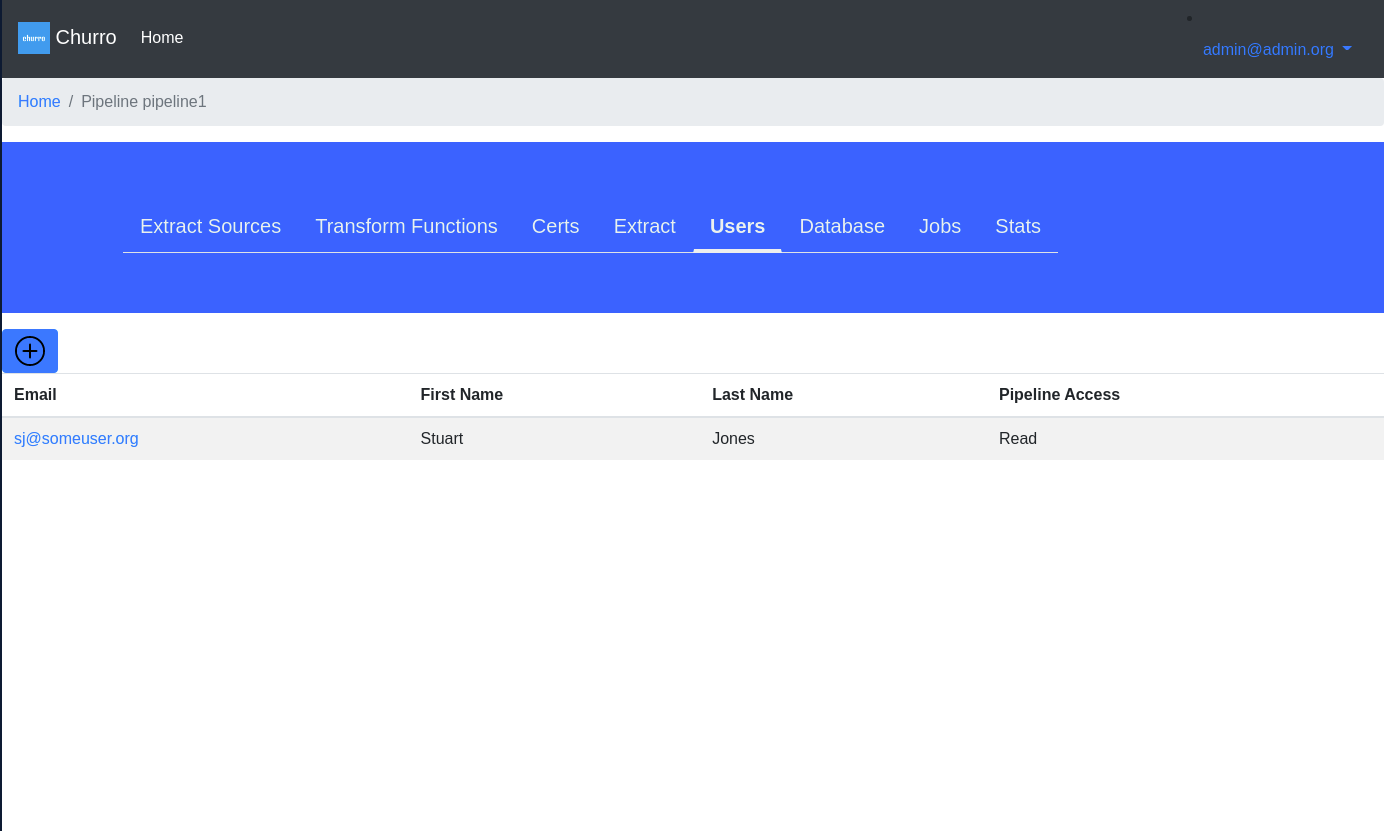churro Design Guide
churro is made of various software components which are deployed to a k8s cluster.
churro-ui
The web user interface is called churro-ui, it is deployed as a k8s Deployment and is fronted by a k8s Service which enables end user access via a browser.

churro-operator
There is a kubernetes operator which runs as a Pod within a namespace called churro. This application component acts to deploy and manage various churro pipelines and insures they are kept running. You run a single churro-operator on your cluster.
When churro creates a pipeline, it creates a kubernetes namespace to hold the pipeline’s churro application components which include the following:
churro-ctl
The brain or controller of a pipeline is handled by the churro-ctl Pod in a given pipeline’s namespace. The churro-ui application communicates with the churro-ctl microservice within each pipeline’s namespace.
churro-extractsource
Ingested files are watched for by the churro-extractsource application component. There is a single churro-extractsource Pod created in each pipeline’s namespace. The churro-extractsource Pod looks for data to process either in the form of data files or JSON API streams. When a new input file is found, churro-extractsource creates a churro-extract Pod to process the input file. A configurable number of extract Pods can run concurrently to provide for massive scaling.
In the case of a JSON API data source, churro-extractsoure will create a churro-extract Pod to read that JSON API. churro web console lets you start and stop JSON API extract pods.
churro-extract
As new files are found to be processed, a churro-extract Pod is created to process that new file. The churro-extract component performs the following functions:
- reads the input file
- applies any transformations to that file’s data
- loads the file data into the pipeline’s database (e.g. cockroachdb)
Once the file is processed, the churro-extract Pod stops. These churro-extract Pods are named using a unique naming suffix so that extracted files can be processed concurrently.
In the case of a JSON API data source, churro-extract Pods do not stop unless you delete them, so they will run and capture data on some configured polling interval (e.g. 5 minutes).
cockroachdb
churro provisions a unique database for a pipeline. This database can be a dedicated cockroachdb database which consists of a StatefulSet which causes n-number of cockroachdb nodes to run within a pipeline’s namespace. Currently the default set of nodes is defined to 3 which is the minimum number of nodes for running cockroachdb.
There is a kubernetes Service named cockroachdb-public that fronts the deployed database allowing end users a means to access the pipeline database.
mysql
churro also supports the creation of churro pipeline backend databases using mysql. churro leverages the MySQL kubernetes operator from bitpoke.
singlestore
churro also supports the creation of churro pipeline backend databases using singlestore’s memsql database. churro leverages the SingleStore kubernetes operator.